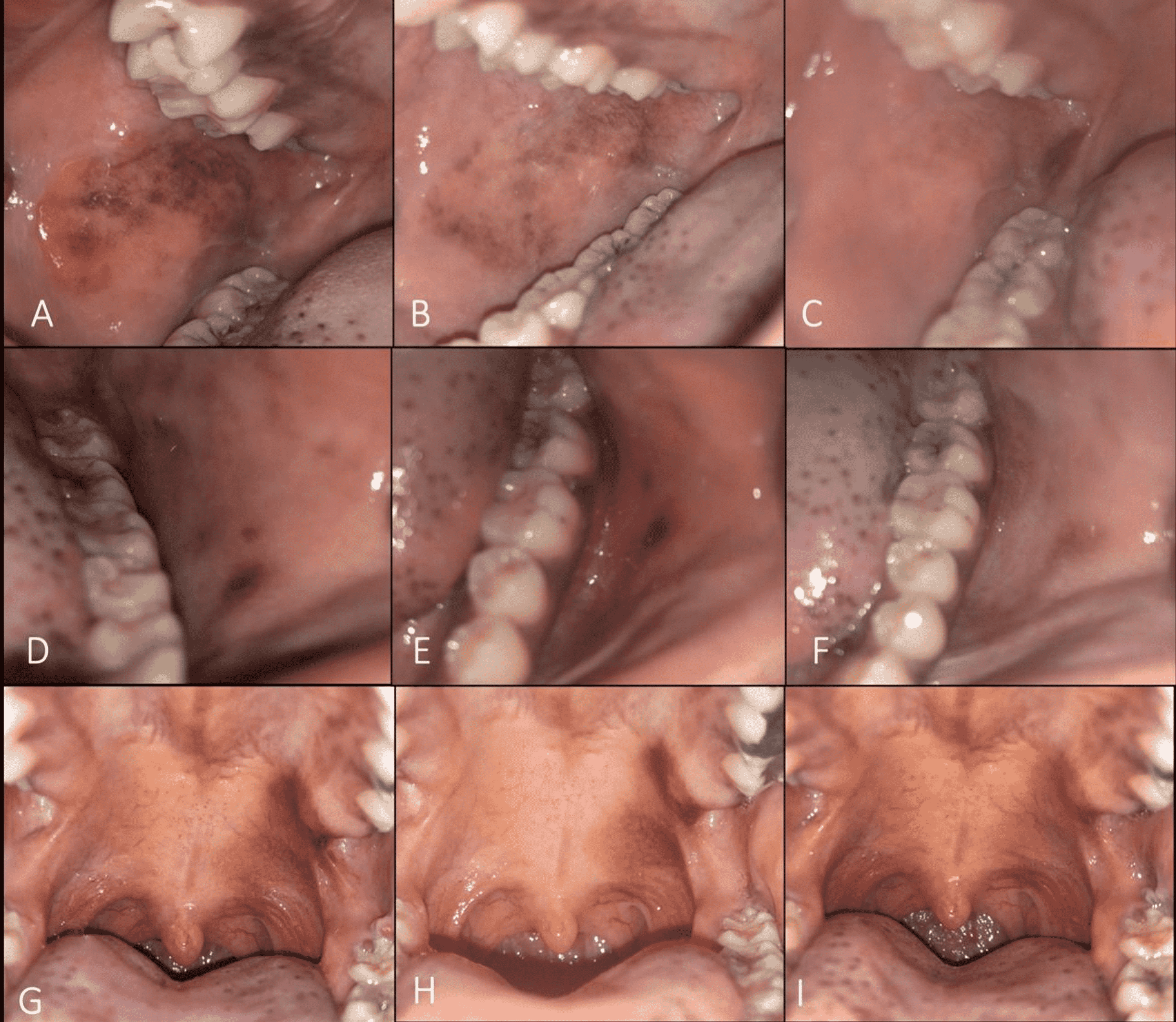
Introduction:
Multifocal Pigmentation can sometimes be a symptom of an underlying medical condition. In this article, we will delve into the causes, symptoms, and treatment options for multifocal pigmentation.
Causes of Multifocal Pigmentation:
Melanin Overproduction: The most common cause of multifocal pigmentation is an overproduction of melanin, the pigment responsible for giving color to our skin, hair, and eyes. This can occur due to various factors such as hormonal changes, sun exposure, certain medications, or genetic predisposition.
Post-Inflammatory Hyperpigmentation: Multifocal pigmentation can also develop as a result of post-inflammatory hyperpigmentation. When the skin experiences inflammation or trauma, such as acne, eczema, or a wound, it can lead to increased production of melanin, causing dark spots or patches to form.
Medications and Chemicals: Some medications and chemicals can cause multifocal pigmentation as a side effect. Examples include certain antibiotics, antimalarial drugs, chemotherapy agents, and chemicals found in hair dyes or skin care products. It is important to be aware of any potential side effects and consult a healthcare professional if you notice any changes in your skin.
Symptoms of Multifocal Pigmentation:
The symptoms of multifocal pigmentation can vary depending on the underlying cause. Common signs include:
Dark Spots or Patches: The primary symptom of multifocal pigmentation is the presence of multiple dark spots or patches on the skin. These spots can be brown, black, gray, or even blue in color.
Irregular Shape and Distribution: Unlike typical freckles or moles, multifocal pigmentation spots often have irregular shapes and may appear in clusters or scattered across different areas of the body.
Itchiness or Sensitivity: In some cases, multifocal pigmentation may be accompanied by itchiness, sensitivity, or a burning sensation in the affected areas. This can be particularly troublesome if the pigmentation occurs on the face, hands, or other visible areas.
Treatment Options for Multifocal Pigmentation:
Topical Creams: Depending on the cause and severity of multifocal pigmentation, a dermatologist may prescribe topical creams containing ingredients such as hydroquinone, retinoids, corticosteroids, or kojic acid. These creams can help lighten the pigmented areas and even out the skin tone.
Laser Therapy: Laser treatments, such as fractional laser resurfacing or intense pulsed light (IPL) therapy, can be effective in reducing multifocal pigmentation. These procedures target the pigmented areas with controlled light energy, breaking down the excess melanin and stimulating collagen production for smoother skin.
Chemical Peels: A dermatologist may recommend chemical peels to treat multifocal pigmentation. This procedure involves applying a chemical solution to the skin, which causes controlled exfoliation and helps lighten the pigmented spots.
Sun Protection: Since sun exposure can exacerbate multifocal pigmentation, it is crucial to protect the skin from harmful UV rays. Regularly apply broad-spectrum sunscreen, wear protective clothing, and limit sun exposure during peak hours.
Conclusion:
Multifocal pigmentation can be a source of concern for many individuals. While it is generally harmless, it is important to understand the underlying causes and seek appropriate treatment if necessary. Consulting with a dermatologist can help determine the best course of
Multifocal Pigmentation How Its Work?
The color of our skin is determined by a pigment called melanin, which is produced by specialized cells called melanocytes. Melanin is responsible for giving color to our skin, hair, and eyes. The production and distribution of melanin in the skin are regulated by various factors, including genetics, hormones, and environmental influences.
In the case of multifocal pigmentation, there are several mechanisms at play:
Melanin Overproduction: One of the primary causes of multifocal pigmentation is the overproduction of melanin. This can occur due to factors such as hormonal changes, sun exposure, certain medications, or genetic predisposition. When there is excessive production of melanin, it leads to the formation of dark spots or patches on the skin.
Post-Inflammatory Hyperpigmentation: Multifocal pigmentation can also develop as a result of post-inflammatory hyperpigmentation. When the skin experiences inflammation or trauma, such as acne, eczema, or a wound, it triggers increased production of melanin in the affected areas. This can result in the formation of dark spots or patches as the skin heals.
Distribution of Melanocytes: The distribution of melanocytes in the skin can also contribute to multifocal pigmentation. Normally, melanocytes are evenly dispersed throughout the skin, producing melanin to provide a consistent skin color. However, in multifocal pigmentation, there may be clusters or localized areas where melanocytes are more concentrated, leading to the formation of pigmented spots or patches in those specific areas.
It is important to note that multifocal pigmentation can be influenced by various factors, and the exact mechanisms may vary from person to person. Understanding the underlying cause of multifocal pigmentation is crucial in determining the most appropriate treatment options.
Treatment for multifocal pigmentation often focuses on reducing the production or distribution of melanin and may include the use of topical creams containing ingredients like hydroquinone, retinoids, or corticosteroids. Additionally, procedures such as laser therapy or chemical peels can help lighten the pigmented areas by targeting excess melanin and promoting skin renewal.
Final Words:
In conclusion, multifocal pigmentation occurs due to various factors such as melanin overproduction, post-inflammatory hyperpigmentation, and irregular distribution of melanocytes. Understanding these processes helps guide treatment approaches aimed at reducing pigmentation and achieving a more even skin tone. It is advisable to consult with a dermatologist for an accurate diagnosis and personalized treatment plan.








